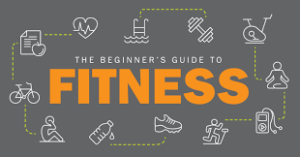Looking to improve your heart health? Discover how to start cardiovascular exercise with this beginner-friendly guide, including tips, benefits, and workout plans.
Cardiovascular exercise, also known as cardio, is one of the best ways to improve heart health, boost endurance, and maintain overall well-being. Whether you want to lose weight, strengthen your heart, or simply increase your energy levels, starting a cardio routine can bring life-changing benefits. However, many beginners feel overwhelmed when it comes to choosing the right exercises and staying consistent.
In this guide, we will break down the essentials of cardiovascular exercise, help you create a sustainable workout plan, and provide expert tips to keep you motivated on your fitness journey.
What Is Cardiovascular Exercise?
Cardiovascular exercise includes any activity that increases your heart rate and breathing while engaging large muscle groups. Common examples include:
- Walking
- Running or jogging
- Cycling
- Swimming
- Jump rope
- Rowing
- Dancing
- HIIT (High-Intensity Interval Training)
The primary goal of cardio workouts is to strengthen the heart and lungs, enhance circulation, and improve oxygen delivery throughout the body.
Benefits of Cardiovascular Exercise
Regular cardio exercise offers a range of health benefits, including:
1. Improves Heart Health
Cardio workouts strengthen the heart muscle, reducing the risk of heart disease, high blood pressure, and stroke.
2. Aids in Weight Management
By burning calories and boosting metabolism, cardio can help with weight loss and fat reduction.
3. Enhances Lung Capacity
Engaging in aerobic activities improves lung efficiency and increases oxygen intake.
4. Boosts Mood and Reduces Stress
Exercise releases endorphins, the “feel-good” hormones that help reduce stress, anxiety, and depression.
5. Increases Energy Levels
Regular cardiovascular workouts improve stamina and reduce fatigue, keeping you active throughout the day.
6. Lowers Risk of Chronic Diseases
Cardio helps regulate blood sugar levels, lower cholesterol, and reduce the risk of diabetes and certain cancers.
7. Improves Sleep Quality
People who engage in regular physical activity often experience better sleep patterns and improved rest.
How to Start a Cardiovascular Exercise Routine
If you’re new to cardio, follow these steps to build a solid and sustainable exercise habit.
1. Set Clear Goals
Determine why you want to start cardio. Whether it’s weight loss, improving endurance, or boosting overall health, setting specific goals will keep you motivated.
2. Choose the Right Cardio Exercise
Pick an activity you enjoy to ensure long-term commitment. Walking, cycling, and dancing are great low-impact options for beginners.
3. Start Slow and Progress Gradually
If you’re new to exercise, begin with short sessions (10-15 minutes) and gradually increase your workout duration and intensity.
4. Warm-Up and Cool Down
Always start with a 5-10 minute warm-up to prepare your body and finish with a cool-down to prevent injuries and muscle soreness.
5. Monitor Your Heart Rate
Using a fitness tracker or checking your pulse can help ensure you’re exercising within a safe and effective heart rate zone.
6. Stay Hydrated and Eat Well
Proper hydration and a balanced diet support cardiovascular health and enhance workout performance.
7. Listen to Your Body
Avoid overexertion and take rest days to allow your body to recover and prevent burnout.
Sample Beginner-Friendly Cardio Workout Plan
| Day | Activity | Duration | Intensity |
|---|---|---|---|
| Monday | Brisk Walking | 20-30 min | Low |
| Tuesday | Cycling | 30 min | Moderate |
| Wednesday | Rest or Yoga | – | – |
| Thursday | Jogging | 20 min | Moderate |
| Friday | Dancing | 30 min | Moderate |
| Saturday | HIIT (Jump Rope, Burpees) | 15 min | High |
| Sunday | Leisure Walk | 20 min | Low |
This plan is designed for beginners, but you can adjust intensity and duration based on your fitness level.
Common Mistakes to Avoid
- Skipping Warm-Up & Cool-Down: Can lead to muscle strain and injuries.
- Overtraining: Doing too much too soon can cause burnout and fatigue.
- Ignoring Hydration: Dehydration affects performance and recovery.
- Not Wearing Proper Shoes: Footwear matters to avoid discomfort and injuries.
- Unrealistic Expectations: Results take time; consistency is key.
Frequently Asked Questions (FAQ)
1. How often should beginners do cardio?
Beginners should aim for at least 3-5 sessions per week, gradually increasing intensity and duration.
2. Can I do cardio every day?
Yes, but varying intensity is crucial. Include low-impact activities like walking or yoga on active recovery days.
3. Is walking enough for cardiovascular health?
Brisk walking is an excellent low-impact cardio exercise that improves heart health and burns calories.
4. Should I do cardio before or after strength training?
It depends on your goal. If building muscle is the priority, do strength training first; if endurance is the goal, do cardio first.
5. How do I stay motivated?
Find activities you enjoy, set achievable goals, track progress, and consider exercising with a friend or group.
Starting cardiovascular exercise is a fantastic step towards improving heart health, increasing energy levels, and enhancing overall well-being. By choosing enjoyable activities, setting realistic goals, and staying consistent, you can build a sustainable cardio routine that fits your lifestyle.
No matter your fitness level, it’s never too late to begin your journey to better heart health. Lace up your shoes, take that first step, and enjoy the benefits of a stronger, healthier body!